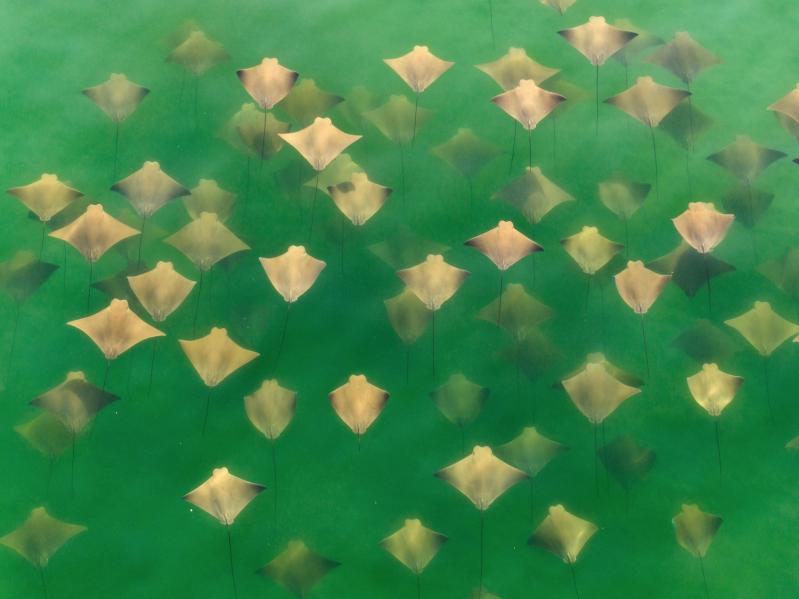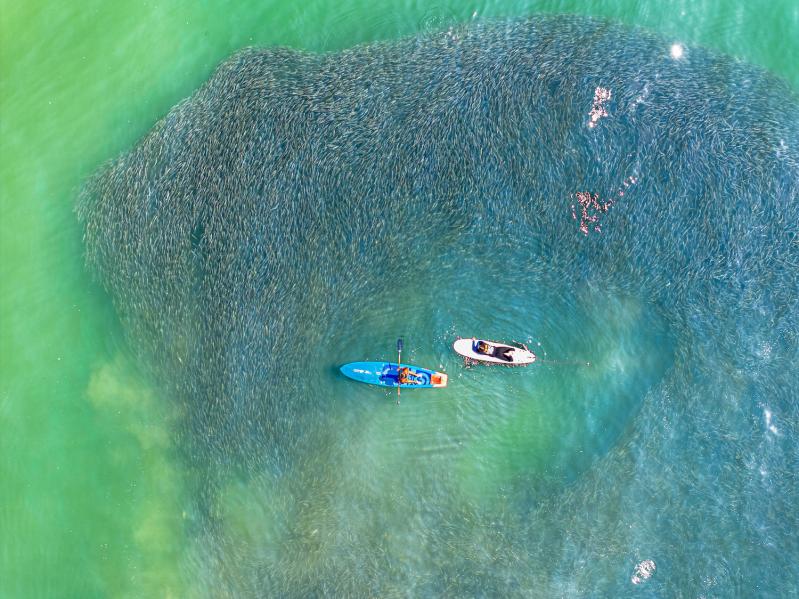Last year, at this point in the whale viewing season Artie Kopelman, the president and senior scientist of the Coastal Research and Education Society of Long Island, had already identified 121 humpback whales off the coast. This year? Just 20.
“This is normal now. Last year was abnormal. Pleasantly abnormal,” he said in a recent phone call. In other words, Hamptoners were spoiled by the recent abundance of cetaceans.
Dr. Kopelman’s organization surveys the waters off the East End four days a week, searching for whales. “Last year was like nothing I’ve seen since 1987, when I started,” he said. “This year is more typical. We don’t know why.”
He does have a hypothesis, however. He believes that a plume of cold, nutrient-rich deep water descended from points north the last couple of years, bringing with it an abundance of food and hungry whales.
“We had whales that should have been in Cape Cod that spent a few months in Montauk last summer.”
One thing he is certain of: The relative scarcity of whales this summer has nothing to do with offshore wind turbines.
He said there have been 255 dead humpback whales found between Maine and Florida since 2016. Of those, 40 percent were in good enough shape to undergo a postmortem examination, and of those, 40 percent of the deaths were related to either ship strikes or entanglement. So, while 60 percent of the deaths are unattributable, Dr. Kopelman was firm: “There is absolutely zero data to link whale death to wind farms,” he said.
A retired professor, Dr. Kopelman finds his work deeply satisfying. “I can’t speak for everyone, but for me, watching whales is my happy place,” he said. “They’re fascinating. And there’s a joy in educating people and seeing them react to the whales.”
Whales migrate north past Long Island in the spring, from April through June, and again as they move back south from September through November. Peak season aligns with our summer season. The most common whales seen off our shores are finback and minke, but humpback and sperm whales are also present.
The National Oceanic and Atmospheric Administration offers rough population estimates for whales in the Atlantic Ocean. The most numerous is the minke whale, at 21,968, followed by the fin whale, at 6,802. These numbers track with local sightings.

In the Gulf of Maine, NOAA estimates that there are 1,396 humpback whales. The western Atlantic holds between 400 and 600 blue whales, while only 370 North Atlantic right whales remain, a critically endangered population.
As for the sperm whale, the muse of Herman Melville and immortalized in “Moby-Dick,” no reliable estimate exists, according to NOAA, but two recent surveys suggest the population hovers at around 5,000 animals.
While beachgoers may be noticing the relative dearth of humpbacks compared to last year (or even the year before, when 60 were seen by early August), Dr. Kopelman said finback whale activity has been “fairly typical.”
“Because we’re not seeing humpbacks, we’re seeing finbacks more readily,” he said. Finbacks are a lot easier to spot from a distance and are one of the fastest whales around, able to travel at 20 knots.
Meanwhile, shark people have their hands full.
“They’re swimming right at us!” shouted Greg Metzger, the South Fork Natural History Museum shark research and education program field coordinator, last week to a man on his boat. Over the phone, he explained the scene. “It’s a school of very unhappy bunker that are getting preyed upon.” Mr. Metzger spends his time between the Shinnecock Inlet and Jones Beach trying to catch and tag sharks for various research projects. “I’ve seen one whale this year. Normally we see whales every time we’re out,” he said.
He attributed the dearth to a lack of bunker schools. “We’re seeing very small amounts of bunker. When we do see them, they’re spotty. Not the number of fish you’d need to feed a whale.”
Like Dr. Kopelman, he didn’t have a clear answer why there were fewer bunker, also known as menhaden, in the nearshore waters this year. “There’s a big menhaden fishery. Where and how much they’re fishing I haven’t been able to confirm. Every year is different. Bunker that normally would be on Long Island could have moved farther north.”
Sharks have shown up late this year, he said. “There’s the same number and species and diversity that we normally see. It just started out slower. Right now, we can predictably go out and catch whatever species we try for. This year we needed a lot of sand tigers for our study, and we’ve been catching them consistently. It feels healthy out here.”
“Sharks, like whales, follow the food. Wherever the food is, that’s where they’ll be.”
One group of sea creatures that could be on the increase locally? Seals.
Robert DiGiovanni Jr., the founder and chief scientist of the Atlantic Marine Conservation Society, which responds to whale strandings, said he had taken a recent flight over the East End, surveying its sea life.
He saw “a bunch of bottlenose dolphins,” but again, not many bunker. “We did see some seals. We think the year-round population is picking up.” He cautioned, however, against drawing broad conclusions from anecdotal data.
“When you’re studying something that is annual, you need 20 years’ worth of data to make sense of it. Maybe this year it seems like there are fewer whales. But 15 years ago, people didn’t even know we had whales. Now, in most cases, people have whale stories to tell.”

